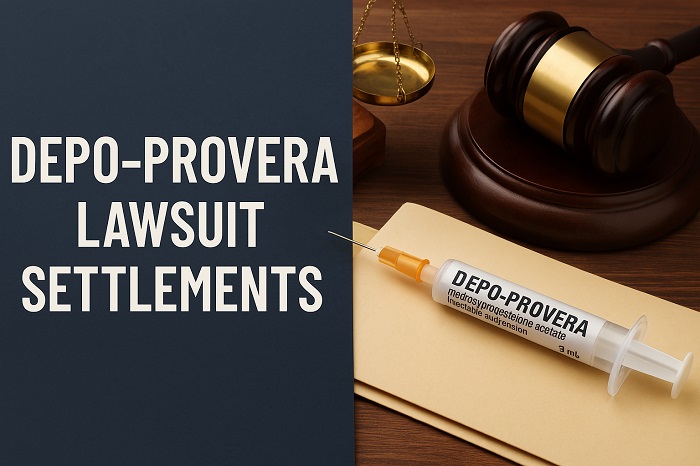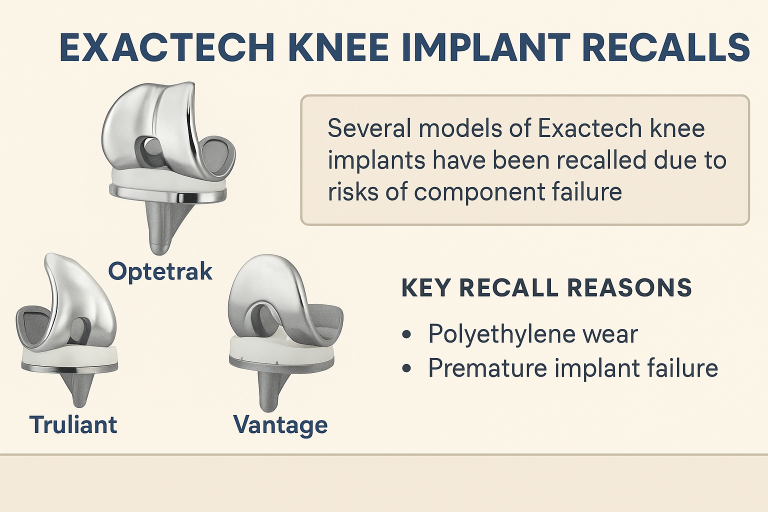The Matthew Eisert physician assistant lawsuit marks a critical turning point in the discussion around medical responsibility. This case forced legal experts, patients, and providers to examine what happens when systems break down in a trust-based healthcare landscape. At its core, this lawsuit highlights a series of alleged failures in ethics, supervision, and patient care. The case gained widespread attention due to its serious allegations, legal complexities, and potential to reshape healthcare compliance standards.
Lawsuits involving physician assistants are increasing. According to a 2023 Medscape report, 12% of physician assistants reported legal threats during their career. This trend suggests rising accountability in the profession. The Matthew Eisert physician assistant lawsuit became a flashpoint in that trend.
Allegations against Eisert include improper treatment protocols, inadequate documentation, lack of physician supervision, and endangerment of patients. Each accusation posed not only legal implications but ethical questions about patient trust and professional standards. Understanding the gravity of this lawsuit begins with examining the man at the center of it.
Who Is Matthew Eisert?
Matthew Eisert is a certified physician assistant. He worked in clinical environments that demanded precision, ethics, and compliance. Before this lawsuit, Eisert had no widely reported controversies. He practiced in settings that required direct physician collaboration.
Despite that, his name emerged in legal news. Allegations claimed he breached ethical and professional standards. These claims now define public perception. They also triggered official investigations and disciplinary actions. Understanding his background adds context. It helps explain the expectations he carried. It also highlights the contrast between a trusted position and alleged professional failure.
Why Does the Matthew Eisert Physician Assistant Lawsuit Matter?
This lawsuit caught national attention. The medical community faced tough questions. Eisert faced claims of professional misconduct. His actions put patients at risk. Authorities launched full investigations. Reports claimed his license was suspended.
Legal action followed immediately. Medical boards reviewed his clinical history. They looked at documentation. They traced his communication with supervisors. Everything pointed to serious lapses in care. This case matters. It reflects the real risks PAs face every day. Patients trust their caregivers. Courts demand accountability. Institutions must maintain public confidence. One mistake can cost a career.
What Are the Allegations in the Matthew Eisert Physician Assistant Lawsuit?
This lawsuit involves severe allegations related to medical health caregivers. some of these are discussed here.
Improper Treatment of Patients
Eisert allegedly ignored accepted medical standards. He failed to follow treatment protocols. The lawsuit argued his decisions harmed patients. Courts examined his clinical choices closely. Expert witnesses reviewed outcomes. Their testimony revealed patterns of poor decision-making.
Missing or Incomplete Records
Documentation was lacking. Eisert reportedly skipped medical notes. He missed important updates in patient files. Missing records hurt legal defense. It also weakens continuity of care. Investigators flagged this as serious negligence.
Skipping Physician Consultations
State law requires collaboration. Eisert allegedly worked independently. Supervising physicians were left uninformed. This violates state scope-of-practice rules. Plaintiffs claimed this led to unsafe treatments. Supervision failures formed a core part of the case.
Endangering Patient Safety
The biggest allegation? Risking lives. Patients allegedly suffered from poor monitoring. Eisert’s decisions lacked oversight. The lawsuit described serious injuries. Some patients required corrective procedures. Others lost trust in their providers.
| Allegation | Issue |
|---|---|
| Treatment Error | Ignored accepted medical standards |
| Record Issues | Failed to document patient care properly |
| No Supervision | Avoided required doctor consultations |
| Risk to Patients | Delivered care without safety reviews |
How Does Supervision Law Affect the Matthew Eisert Physician Assistant Lawsuit?
PAs must work under legal supervision. State regulations define this clearly. Most states demand written agreements. These specify tasks, responsibilities, and review cycles. Eisert allegedly broke these rules. He acted outside allowed authority. He failed to check with supervising doctors. This exposed patients to danger. Such actions violate both policy and trust. Supervisors carry legal liability too. That’s why collaboration matters. Laws exist to ensure team-based care. When broken, lawsuits follow.
What Ethical Lines Were Crossed in the Eisert Case?
Ethics guide medical behavior. Eisert reportedly ignored key principles. The lawsuit highlighted ethical lapses.
Ignoring Consent Rules
Patients must agree to treatment. Eisert skipped consent forms. Some procedures happened without approval. This breaks basic patient rights. Consent protects both patient and provider.
Omitting Medical Notes
Notes support continuity of care. They also help in audits. Eisert allegedly left records blank. Investigators noted repeated gaps. Courts called it a pattern of misconduct.
Breaching Confidentiality
Patients trust medical professionals. That trust includes privacy. Eisert allegedly disclosed sensitive details. Confidentiality rules exist to prevent such breaches. Breaking them destroys reputation.
Ethical violations don’t always break the law. But they weaken trust. They trigger internal board reviews. They may lead to loss of license.
What Legal Risks Do PAs Commonly Face Like Matthew Eisert?
The Matthew Eisert physician assistant lawsuit is not an isolated case. In fact, it reflects a growing trend in the medical profession. More physician assistants face legal scrutiny as patient rights and compliance standards grow more rigorous. A 2023 Medscape report revealed that 12% of PAs reported experiencing legal threats during their careers. This number is expected to rise as accountability systems strengthen.
Missing Documentation
Complete and timely documentation is not just a professional habit—it is a legal requirement. When physician assistants fail to document patient care accurately, they risk not only patient harm but also legal exposure. Courts view missing records as signs of negligence. These gaps leave providers defenseless during audits and malpractice claims. Legal teams struggle to build a case when basic records are missing. Documentation is a PA’s first line of legal defense and must never be neglected.
Prescribing Without Approval
Some physician assistants mistakenly assume authority they do not legally possess. Prescribing medication without proper approval can lead to serious violations. State regulations clearly define what a PA can and cannot prescribe. Working outside that boundary is a major legal risk. Such errors are often flagged during audits or patient complaints. Penalties range from fines to license suspension. Ignorance of the law is not a valid defense in these cases.
Skipping Consent Procedures
Failing to secure patient consent before treatment is both unethical and illegal. Patients have the right to understand and approve the procedures they undergo. Physician assistants who skip this step compromise patient autonomy and expose themselves to lawsuits. Courts treat lack of consent as a serious violation. It often results in disciplinary action from licensing boards. Even verbal consent must be properly documented to ensure protection.
Independent Treatment Decisions
Physician assistants must work under supervision. Acting independently without physician input violates scope-of-practice laws. When PAs overstep these boundaries, they expose their institutions to liability. Supervising physicians may also face disciplinary action. In Eisert’s case, this exact issue contributed to legal claims. Boundaries exist for a reason—to protect both the patient and the provider. Following supervision rules is essential for risk management.
These mistakes often occur in fast-paced environments. Still, no amount of pressure justifies skipping legal steps. The Matthew Eisert physician assistant lawsuit serves as a warning to all PAs. Legal awareness must become part of everyday practice.
What Burdens Did Matthew Eisert Likely Face During the Lawsuit?
Legal pressure is heavy. Eisert likely felt financial strain. Stress and burnout follow lawsuits. Careers suffer.
A MedMalDirect survey found 47% of PAs don’t know how to respond to patient complaints. This knowledge gap increases risk.
Challenges include:
- Confused reporting processes
- Legal fees without preparation
- Public reputation damage
- Anxiety and job insecurity
Many professionals never recover. Legal education is critical.
How Do Institutions Respond After Lawsuits Like Eisert’s?
The Matthew Eisert physician assistant lawsuit triggered a series of urgent reforms across healthcare institutions. Lawsuits of this nature rarely stay confined to the individuals involved. They create widespread ripple effects that influence policy, training, and risk management protocols throughout the healthcare ecosystem.
When a legal incident exposes internal weaknesses, organizations must act fast. The Eisert case served as a wake-up call to medical employers across the country. From policy reforms to risk assessment strategies, the institutional response is typically swift and comprehensive.
Policy Updates
Most institutions immediately revisit their supervision policies after legal disputes. They review job descriptions, clinical roles, and reporting structures. Compliance officers update internal documents to ensure physician assistants understand their scope. New supervision guidelines often include more detailed protocols for approvals, escalation, and documentation.
Hospitals may also formalize communication plans between PAs and supervising physicians. These updates help reduce ambiguity and clarify legal responsibilities. Stronger policies limit institutional risk and encourage proactive oversight.
Legal Training
Lawsuits often reveal that employees lacked legal awareness. Following the Eisert case, many healthcare facilities launched mandatory legal training. These sessions educate PAs about documentation standards, patient rights, consent procedures, and scope-of-practice limitations.
Legal teams lead interactive workshops, conduct mock scenarios, and provide access to legal helplines. PAs learn how to identify red flags, ask for help, and report irregularities. Continuous education reinforces a culture of compliance and builds confidence in daily clinical decisions.
Documentation Audits
After high-profile lawsuits, internal auditors conduct full reviews of patient records. These audits examine note completeness, consent forms, physician collaboration, and treatment justification. If any gaps or inconsistencies surface, corrective actions follow immediately.
Institutions often invest in automated auditing tools to catch potential violations early. Follow-up training is offered to employees with incomplete documentation. Teams may also adopt standardized electronic health record templates that improve consistency and accuracy.
Better Insurance and Legal Preparedness
Institutions affected by lawsuits like Eisert’s often reassess malpractice coverage. They ensure all clinical staff are adequately insured. Legal departments help staff understand policy terms and claim procedures.
Additionally, some employers create legal response protocols. These include prewritten statements, media handling policies, and attorney contact chains. By preparing ahead, institutions can respond strategically to future legal challenges.
Overall, these measures serve a critical purpose. They prevent recurrence, protect staff and patients, and restore institutional credibility. The Matthew Eisert physician assistant lawsuit proved that silence, delay, or ignorance invites greater damage. Institutional readiness remains one of the strongest shields against legal fallout.
What Can PAs Learn From the Matthew Eisert Physician Assistant Lawsuit?
The Matthew Eisert physician assistant lawsuit delivers essential lessons for every practicing and aspiring PA. It proves that prevention is always more effective than reacting under legal pressure. Each lesson from this case can help PAs reduce their legal exposure and build safer professional habits.
Always Document
Every patient encounter deserves complete documentation from start to finish. Each note protects both patient welfare and the practitioner’s integrity. Inaccurate or missing records weaken clinical decisions and legal defense. Courts often view gaps in documentation as signs of negligence. Strong, timely entries serve as the first line of protection. Proper records demonstrate adherence to protocol and reinforce accountability.
Know Your Scope
Practicing within defined legal boundaries is critical for physician assistants. Never make clinical decisions that exceed your level of authority. Before initiating any procedure, consult your state’s scope of practice and your collaborative agreement. In Eisert’s case, overstepping his scope led to serious consequences. Asking questions before acting prevents irreversible errors. PAs must regularly review licensure laws and seek clarity on unclear tasks.
Respect Consent
Informed consent is more than a form—it is a legal and ethical contract. Every patient must be given clear information and an opportunity to agree. Skipping this step removes a patient’s autonomy. Worse, it exposes the provider to claims of coercion or misconduct. A PA must explain risks, options, and expected outcomes clearly. Consent should be documented and confirmed before proceeding with treatment.
Communicate Often
Open communication with supervising physicians is non-negotiable in medical settings. Keeping supervisors informed ensures legal alignment and strengthens collaborative decision-making. Even routine care may require brief check-ins. In the Eisert case, the lack of consultation was a key allegation. Document your communications when needed. Share updates consistently and confirm guidance in writing where appropriate.
One poor decision or omission can dismantle years of hard work. The Matthew Eisert physician assistant lawsuit shows how a single point of failure—whether ethical, legal, or administrative—can lead to lasting damage. Every PA must view this case as a call to tighten processes, enhance diligence, and lead with caution.
How Did Media Influence the Matthew Eisert Physician Assistant Lawsuit?
Media coverage spread the Matthew Eisert physician assistant lawsuit faster than expected. Healthcare blogs, legal websites, and online forums amplified every detail. What started as a local incident quickly became a national headline.
Because perception shapes reality, this media spotlight created external pressure on medical boards and institutions. Public trust and brand reputation suddenly became part of the litigation’s impact. Hospitals and clinics care deeply about public image. Negative press often influences internal investigations and legal responses.
How Can Legal Literacy Help Prevent Cases Like Eisert’s?
Understanding the law saves careers. Medical skill alone isn’t enough.
Tips for legal literacy:
- Attend compliance workshops annually
- Join PA associations for support
- Read updated state guidelines
- Review your malpractice coverage
Employers should offer legal simulations. Practice builds awareness.
Will the Matthew Eisert Physician Assistant Lawsuit Influence Future Laws?
Yes. Lawmakers noticed the case. Some states began proposing changes.
Possible reforms:
- Stricter supervision mandates
- Required digital documentation
- Penalties for ethical breaches
The lawsuit revealed system weaknesses. Reform discussions continue.
What Is the Final Verdict on the Matthew Eisert Physician Assistant Lawsuit?
The Matthew Eisert physician assistant lawsuit reminds us of the fragile line between trust and liability. One clinical decision can trigger investigations, lawsuits, or permanent license loss. This case paints a stark picture of what happens when ethics and policy are ignored.
Every PA must remain vigilant. Documentation should be complete. Consent must be secured. Communication with supervisors must be routine. These are not optional—they are legal and ethical requirements.
Institutions must also step up. Legal training, policy audits, and supervision checks help reduce future lawsuits. When systems fail, outcomes like Eisert’s become inevitable. The Matthew Eisert physician assistant lawsuit should not just be remembered. It should reshape how PAs view risk, law, and responsibility.




